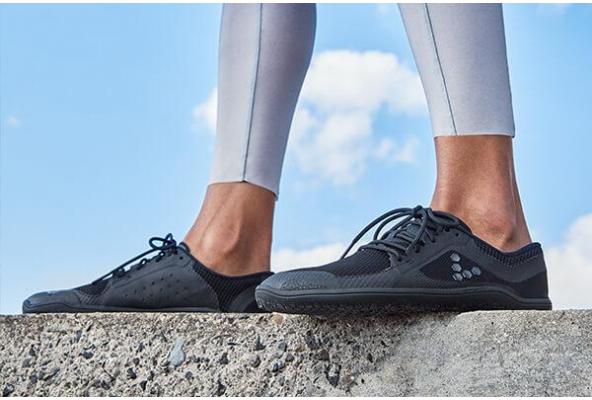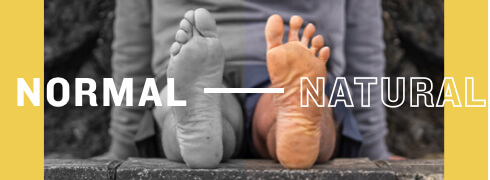So, you want to join the barefoot adventure, but find all the terminology and choice a little confusing?
We agree!
Which is why, to help you take the right first steps in reconnecting with your feet and the natural world, this blog explains:
- What barefoot footwear is
- The key features of barefoot footwear
- Tips on taking your first barefoot steps
The barefoot basics
To put it simply, barefoot footwear (or ‘minimalist’ footwear, as it’s sometimes called) strips away the extra bits of traditional shoes. The aim is to allow your feet to move more naturally, and to grow stronger and more agile as a result. Barefoot footwear still protects your feet from weather and harsh terrain, but it does so with less shoe.
There are many different types of barefoot footwear. But all of them have these key characteristics:
- No heel-to-toe drop. Heel-to-toe drop is the difference in elevation, in millimetres, between the forefoot and the heel. A proper barefoot shoe should have zero drop - just like your feet! By comparison, traditional running shoes have an 8-14mm drop. Some supposedly barefoot footwear is actually ‘low-profile’ footwear, with a 4-7mm drop. Less drop than normal shoes, but not truly barefoot.
- A lower stack height. The stack height is the height of the sole. In other words, the amount of shoe between your foot and the ground. Barefoot footwear tends to have a stack height of around 3-8mm, so your feet can feel the ground, whereas most traditional running shoes are in the 9-30mm range.
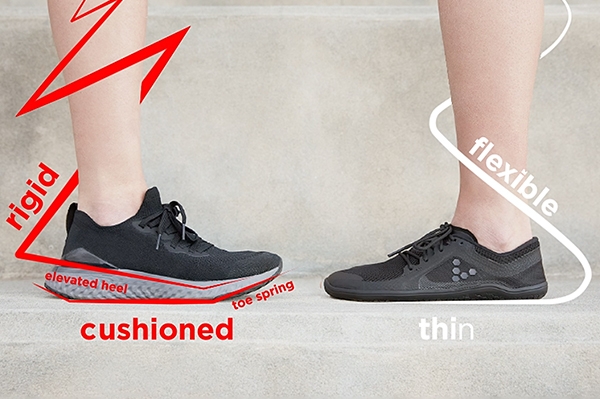

- A wide toe box. The toe box is, as you might have guessed, the space for your toes. Barefoot shoes have wide toe boxes, with space for your toes to splay and recoil. Traditional shoes, including normal running shoes, are tapered, pushing your toes together and compromising their strength and agility.
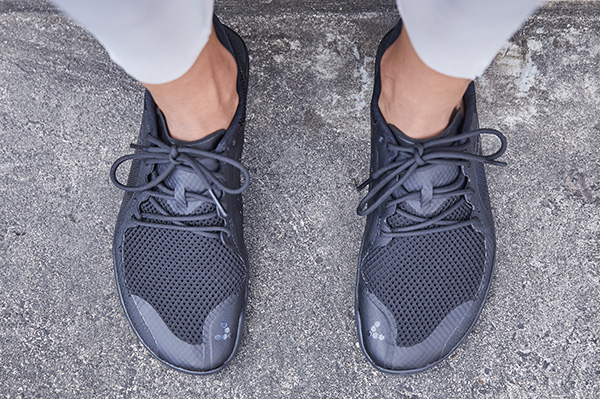

- Less padding and support. Traditional shoes have many types of padding and support, including arch support, ankle support and padded soles (higher stack height, remember!). Barefoot footwear has none of this, helping your feet build strength.
- Lightweight and flexible. Because of their minimalist design, truly barefoot shoes will be the lightest and most flexible out there.
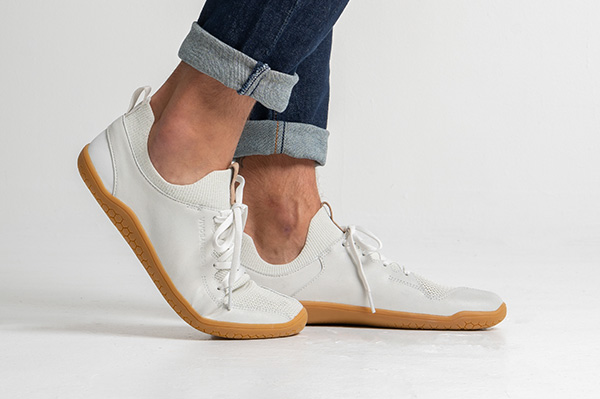

Tips for your first barefoot steps
Whether you’re a hiker, a runner or just want everyday footwear for work, there are a few things to remember before charging excitedly outside for your first barefoot adventure …
Go slow!
If you’re new to barefoot, your feet will be used to heel-to-toe drops, high stacks, narrow shoes, tapered toe boxes and lots of padding and support. Going barefoot means the 33 joints in your foot, and the many tendons, muscles and bones, will finally get to move freely! This is fantastic, and will make your feet stronger, but it will take time to adjust. So go slowly. Start with a short walk (even if you have barefoot running trainers) and build gradually, listening to your body all the way. It can take six weeks or more to comfortably walk longer distances. Patience is a virtue.
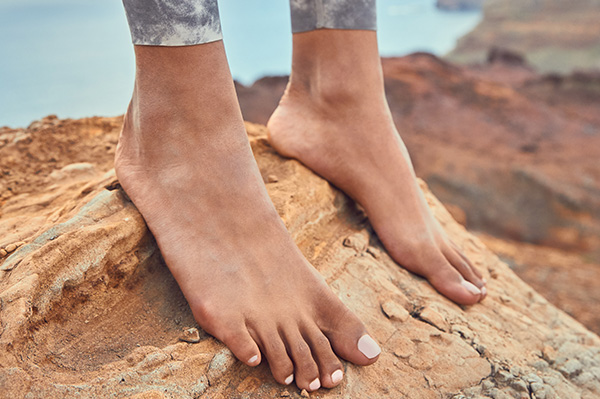

Explore your new feet
Going barefoot means discovering new feelings and movements. So go slowly, but go curiously.
Our feet, just like our hands, are packed with nerve-endings, because they are made to feel. Jumping in puddles, balancing along fallen logs, wiggling your toes and feeling the earth: these all feel different barefoot, and are wonderful ways to reconnect your feet and the natural world.
And healthy movement means so much more than hitting the gym. It means moving more and moving better, wherever day-to-day life leads. Whether it’s some toe-ga at home or climbing trees outside, embrace everyday movement and prime your feet.
Learn more
Going barefoot is a journey of continuous adventure and learning. To get the lowdown on the barefoot movement, we recommend our Barefoot Fundamentals course. Part of our VHealth Hub, it covers everything from injury prevention to progressing safely from barefoot walking to running. The expert-led tutorials are rooted in science supporting barefoot life, and designed to help you grow healthier by learning to move naturally.
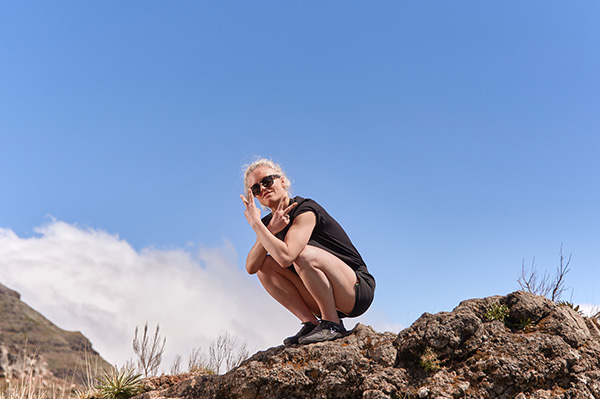

Welcome to barefoot – we’re pretty sure you’re going to love it here ;)
